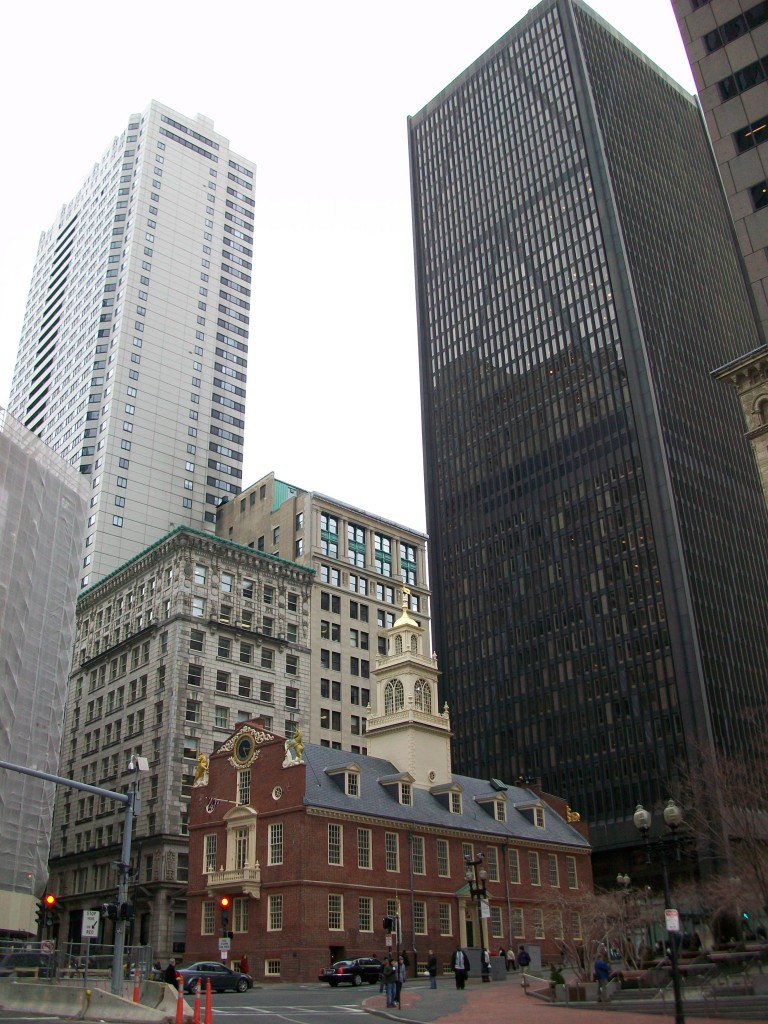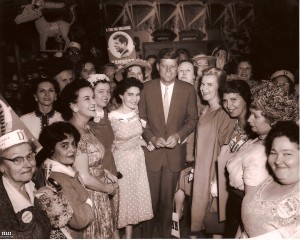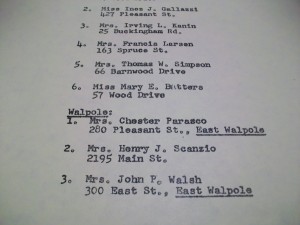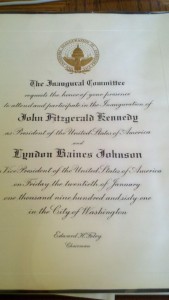Group Members: Me.
http://sites.google.com/site/culturemapsboise
My local history project focused on my two loves in History; interpretation and preservation. By finding structures along Capitol Boulevard with historical significance, I created a tour from the Depot to the Capitol building. Instead of being a wealth of knowledge on all of the stops, and potentially overwhelming the average tourist, I decided to format the tour around enticing the public to enter these buildings or sites in order to do some investigating of their own.
The Process
I knew from the start that I wanted to embrace my professional experience as a Historical Interpreter into my public history project. Growing up, I became fascinated with the stories of buildings that surrounded me, no matter how ‘insignificant’ they were to everyone else. Whether it was a modest family homestead, or a bustling cultural landmark, I wanted to know. My endeavor began with trying to find a way to properly tell the story of Boise, as I wanted my tour to encompass the history and culture of a city I’ve grown fond of over the past 6 years.
With the ‘Freedom Trail’ in Boston fresh in my memory, I decided that I needed to choose a path that would lead the user from one destination to another, but not necessarily in any chronological order. As long as the building had significance to the establishment of today’s Boise, then I’d include it. At first, I thought of ‘Main Street USA’ as a universal theme that could tie to other major cities, but the development of Main St. in Boise didn’t tell as much of a cultural story as I had hoped. Other themes such as the government buildings, or Masonic footprint were considered as well. In the end, the breadth of information and variety of stories of Capitol Boulevard proved to be the best introduction to this idea.
The first step was to reference other similar projects. One important resource was Boise’s Department of Art and History and their “Did you Know?” brochure (http://artsandhistory.cityofboise.org/PDF/PublicArt/DidYouKnowCapitolBlvd.pdf) and Boise State University’s “Depot to the Dome” (http://www.boisestate.edu/history/cityhistorian/galleries_city/capital_blvd_gallery/1capitol_blvd.html).
These projects gave me a solid foundation and direction on where my project should lead. Both of these resources provided me with locations and an introduction to its significance. In some cases (mostly in the ‘did you know?’ brochure), no information was given other than a location and title.
With a rough outline in hand, I started researching. My first ventures lead me to Google, which provided me with more overviews of the sites in question, mostly from the websites of the buildings or the businesses within. Once my resources ran dry, I started searching the library on campus where I came across some helpful tools including “Quintessential Boise – An Architectural Journey” by Charles Hummel and Tim Woodward. This site not only provided me with further detail into the sites I had already started to investigate, but also some that I had not considered before.
Learning Objectives
My goal in developing this application/mobile site was to provide the city with an outlet for promotion and narration in some of the untold history along Capitol Boulevard. The vision of the entry into Boise was important in the construction and development of these public buildings and businesses that line the street, but has disappeared into the background as an active history on the street hasn’t been maintained.
In drawing inspiration from the ‘Freedom Trail’ in Boston, my hope was to inspire the city to form a dedicated path with interpretation in signage, oral tours, and in developing technologies such as this mobile app/website. In my research into the beginnings of the Freedom Trail, I found out that all of the sites struggled on their own to maintain tourism and profits until the trial was developed. By having all of the sites joined together under a common theme, more visitors were able to find out about these sites and visit them in hopes of learning the story of Boston and the beginning of the country.
One of the goals that was developed over the process was to not over-interpret the sites. I wanted to provide a brief narrative that was interesting enough to provoke the user into finding more information out on their own. This was accomplished by either showing pictures of what the structures looked like throughout their history, or telling just enough of the site’s story to tease them into reading signage or entering the establishment. This goal was also met by mentioning the current business and what services they offer.
Sources and the Influence
This project was unique in that influence was discovered throughout the entire process, even finding new sites and stories up to the day before the project was to be presented. It seemed as if every new picture found or story told lead to another that was crying out to be discovered. I had to find a way to censor my material in order to not overwhelm the user with information, but include it so that the story doesn’t go untold. On the slide depicting the history of the Capitol Building, the pictures of the entire process provided a narrative that I didn’t know existed; in that the dome was almost axed from the final product due to budgeting issues, and that the picture of it without the dome occurred not just during a point in construction but during lengthy deliberations on whether or not the city could afford to include it.
At other times, I discovered new sites by walking Capitol Boulevard multiple times. Buildings that I previously thought as insignificant or not historically important such as The Literary Center or the Library ended up being some of the more interesting stories on the tour. The wonderful thing about this project is that I was able to pull influence and resources through multiple routes, and sometimes they jumped out at me.
The Challenges in a Trail
Most of my challenges were internal. As a former Interpreter, I want to be a wealth of useless knowledge on a topic. Every story is important to me, and the inner Historian in me wanted to publish an entire website for each individual building on the tour. After watching Nancy Proctor’s presentation on mobile devices in museums, I was inspired to go against everything I wanted to do in order to keep it simple. From the development to the site, to the information on it, I needed to remember that not everyone is as endlessly interested in random information like I am. My goal for the project wasn’t to bore the user into never wanting to walk near anything historical (or developed by me) again.
In being a bit of a tech guru, I wanted to make the application/site very in-depth and feature-ridden. After developing the first template, I realized that not only would it be difficult to operate on a mobile devices, but that someone who isn’t as tech-savvy wouldn’t be able to understand the multiple layers of the site. I removed all of the navigation buttons except the large picture of the skyline at the top to return to the homepage, and a ‘Next’ button at the bottom of every screen. This way, the emphasis of the tour is focused on the content rather than the features.
As mentioned before, my main quarrel with this tour was in the information provided. Not only was I having difficulties omitting certain stories or facts, but also in finding those details out in some cases. Buildings such as Papa Joe’s, the Library, and the Literary Center do not serve the same purpose for which they were built, and have served many purposes over time resulting in a lost narrative. When I did eventually find out stories or facts about a place, even some city Historians and archivists were surprised at my findings. This result inspired me to complete it, because if no one puts in this effort than the histories of these places risk being lost.
What the Future Holds
My hopes is that this project eventually gets picked up either by the city or an outside organization so that Boise will be able to have a cohesive culturally themed tour to promote itself, but not necessarily have to provide additional staffing to join the sites. While I would love to pursue this myself, my impending military career would take both my time and my self out of Boise, leaving the research and development efforts to a severe detriment. The contacts that I hold in the Historical Society were aware of my project and the potential benefit that could result, as well as the ‘word of mouth’ that could hopefully be created by my research, presentation, and establishment of the application. Since this was an academic project, my resources were fairly inexpensive, especially in gaining permission from the Archives to use all of the pictures I didn’t take myself. If this project was to be developed professionally or by the city, a good portion of the research and collection would be provided to them in the form of the mobile site. If an outside organization was to pick this project up, grants and funding from the federal government or the city of Boise could be obtained in addition to personal and business donations, much like how the Freedom Trail in Boston came to be.
Advice and Hopes
The primary thing I hope to portray in my project is the importance of ‘insignificant’ history. When I was an Interpreter for the Old Pen, I focused on the small stories that made the site more personable. The story of the individual tends to interest the common person much more than the overarching theme. What also needs to be kept in mind is that not everyone has the time or interest to perform the level of research it usually takes to get the personal story of a site or the people who worked or lived there, but its those stories that are the most interesting to them. The grand tale of a site can be easily told through signage or literature provided by the site, however if an interpretation effort is extended in telling at least one seemingly unimportant story about a single person or event that occurred here, the tourist can imagine themselves being in the same situation and hopefully would inspire them to immerse themselves in the wealth of knowledge the site could provide.
The only advice I can provide in this type of research situation is to be persistent. Over the course of my 2 1/2 year tenure as an Interpreter, I slowly developed a tour that accomplished my main goals as a Historian; inform the public while enticing their further research or inquiry. I never wanted any of my guests to leave the site fulfilled with the knowledge they had received. I wanted them to leave asking questions, debating topics, or having discourse with others who may or may not have ever been to the site. An active conversation is the only life a historic site has to offer. Without it, the site can disappear into its own history.



